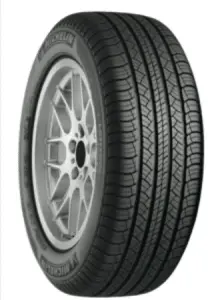With massive blizzards in progress and on the way, temperatures dropping, and those groundhogs predicting more winter (well, half of them are, anyway), it’s obvious that winter is here to stay for a while. How can you prepare yourself for winter driving? Read on to find out.
Get snow tires
Snow tires are more effective at temperatures below freezing than all-season tires, with all-season tires actually helping to cause more accidents than they prevent. Proper winter tires have the right tread for sticking to the road in nasty weather and start showing their superiority in temperatures below 7 degrees Celsius. Keep your eyes peeled for tire sales where snow tires can drop below $200.00 per tire, or, if you absolutely have to, buy used. They won’t be as effective as new winter tires, but they will be better than summer or all-season treads. Make sure your winter tires have at least 3.5 mm of rubber tread on them – otherwise, they won’t be any good to you.
Have an emergency kit on hand
 An emergency kit should have a blanket, non-perishable food items (such as energy bars), water, candles, matches, a deep can for the candle, a first-aid kit, a seat belt cutter, road maps, extra clothes, a wind-up flashlight (no need for batteries), and extra shoes or boots. Anything that can help keep you warm or make you more visible if you wind up in a ditch is a good thing to have on hand. It doesn’t hurt to keep a bag of kitty litter in the trunk, either, to provide traction and help you get out of a sticky situation.
An emergency kit should have a blanket, non-perishable food items (such as energy bars), water, candles, matches, a deep can for the candle, a first-aid kit, a seat belt cutter, road maps, extra clothes, a wind-up flashlight (no need for batteries), and extra shoes or boots. Anything that can help keep you warm or make you more visible if you wind up in a ditch is a good thing to have on hand. It doesn’t hurt to keep a bag of kitty litter in the trunk, either, to provide traction and help you get out of a sticky situation.
Road flares, a warning light, tow rope of some kind, and even jumper cables are great to have in your trunk, too. You can never be too careful.
Make sure your vehicle is in good working order
It’s very important to keep on top of general maintenance in preparation for – and during – winter. The cold can make existing problems worse, batteries drain faster when they’re cold, and dirty oil (remember that oil change you were supposed to get several thousand kilometers ago?) can lead to issues. The last thing you want is to have your car conk out while you’re in the middle of a blizzard in the middle of nowhere!
 It never hurts to keep an extra bottle of antifreeze and engine oil in the trunk, too, just in case. As a general rule, keep an eye on fluid levels and top up when you start to get low before you hit the road, so you don’t have to do so while you’re away from home – or on the side of the road in a blizzard.
It never hurts to keep an extra bottle of antifreeze and engine oil in the trunk, too, just in case. As a general rule, keep an eye on fluid levels and top up when you start to get low before you hit the road, so you don’t have to do so while you’re away from home – or on the side of the road in a blizzard.
Other important maintenance things to keep an eye on are: tire pressure, batteries (are your car’s internal and external lights dimming when they shouldn’t, is the battery charging as it should?), whether or not your heater is working properly (blower motors regularly die on older vehicles, but please don’t replace yours with one from a wrecking yard; it will not last), and how your car sounds when it starts. If it has a hard time starting when things are just starting to cool down, it’s going to be worse when the really cold weather shows up.
